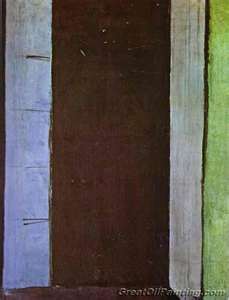
While preparing to team teach a course in Japanese poetry and poetics, I have had the great fortune to read The Ink Dark Moon: Love Poems by Ono no Komachi and Izumi Shikibu, Women of the Ancient Court of Japan, translated by Jane Hirshfield, with Mariko Aratani. The poems (in translation) are marvelous. They are so for a variety of reasons, but key among them is that fact that, through and through, The Ink Dark Moon is a treasure trove of turns.
There are turns of all sorts. There are concessional turns:
Although the wind
blows terribly here,
the moonlight also leaks
between the roof planks
of this ruined house. (124)
There are ironic turns:
I think, “At least in my dreams
we’ll be able to meet…”
Moving my pillow
this way and that on the bed,
completely unable to sleep. (129)
There are questions and answers:
You ask my thoughts
through the long night?
I spent it listening
to the heavy rain
beating against the windows. (107)
There are ironic questions and answers:
If the one I’ve waited for
came now, what should I do?
This morning’s garden filled with snow
is far too lovely
for footsteps to mar. (132)
There are cliche and critiques:
I used to say,
“How poetic,”
but now I know
this dawn-rising men do
is merely tiresome! (63)
However, because the poets often use the natural world as a prism through which to observe and try to understand their inner lives, there are a great number of emblem and metaphor-to-meaning structures:
As pitiful as a diver
far out in Suma Bay
who has lost an oar from her boat,
this body
with no one to turn to. (33)
*
Night deepens
with the sound
of a calling deer,
and I hear
my own one-sided love. (9)
*
A string of jewels
from a broken necklace,
scattering–
more difficult to keep hold of
even than these is one’s life. (141)
*
The dewdrop
on a bamboo leaf
stays longer
than you, who vanish
at dawn. (108)
*
If, in an autumn field,
a hundred flowers
can untie their streamers,
may I not also openly frolic,
as fearless of blame? (39)
*
Like a ripple
that chases the slightest caress
of the breeze–
is that how you want me
to follow you? (25)
*
Last year’s
fragile, vanished snow
is falling now again–
if only seeing you
could be like this. (88)
*
Watching the moon
at dawn,
solitary, mid-sky,
I knew myself completely,
no part left out. (89)
*
The emblematic nature of many of these poems is underscored by the fact that the poems in The Ink Dark Moon often accompanied gifts (acknowledged in headnotes to the poems), and use those gifts as lyric occasions:
Written for a current wife to send to an angry ex-wife, attached to a bamboo shoot
The bamboo’s
old root
hasn’t changed at all–
Is there even one night
he sleeps alone? No. (71)
The drive to make connections between the inner life and the external world is so powerful that it can’t be stopped, despite (supposedly) knowing better:
This heart is not
a summer field,
and yet…
how dense love’s foliage
has grown (103)
*
While all of the above poems employ the emblem or the metaphor-to-meaning turn, I want to share two poems that have at their core the relationship between the inner life and the natural world (conveyed as metaphor) but that turn in different kinds of ways.
The following poem is included among a group of poems mourning the death of Prince Atsumichi:
Remembering you…
The fireflies of this marsh
seem like sparks
that rise
from my body’s longing. (145)
And this particular poem, and the haunting metaphor at its core, terrifies me:
How sad,
to think I will end
as only
a pale green mist
drifting the far fields. (28)
*
I’ve written elsewhere (including here, here, here, and here) of Jane Hirshfield’s important engagements with the turn. In “On Japanese Poetry and the Process of Translation,” an afterword in The Ink Dark Moon, Hirshfield reveals that the turn was an important consideration for her as she translated. Analyzing the ways that one of the poems employs “some of the means by which Japanese poetry attains remarkable depth within a brief utterance,” Hirshfield notes the emblematic / metaphoric element at the core of so many of these poems, stating, “There is the all-pervasive device of intertwining human and natural worlds, in which the natural illuminates the human to keenly felt effect” (166). And Hirshfield goes on to explicitly identify the turn as one of the tools for making great verse: “There is the two-phase rhetoric, in which occurs the movement of human heart and mind that is essential to any good poem” (166-167).
The front matter of The Ink Dark Moon includes a list of poetry by Hirshfield, and, published in 1990, it contains only two books: Alaya and Of Gravity & Angels. It, thus, is likely the case that Hirshfield’s work with The Ink Dark Moon was an important step on her own journey to understand and craft compelling turns. It certainly feels this way.
Fans of the turn, of Japanese poetry, of Hirshfield, and/or of poetry that, as the book’s introduction states, “illuminate[s]” our lives will find much to admire and investigate in The Ink Dark Moon. Do check it out!




